
Rediscovering Japan

Rediscovering Japan
Travel (Matsushiro/Obuse (Nagano))

by tomizuta
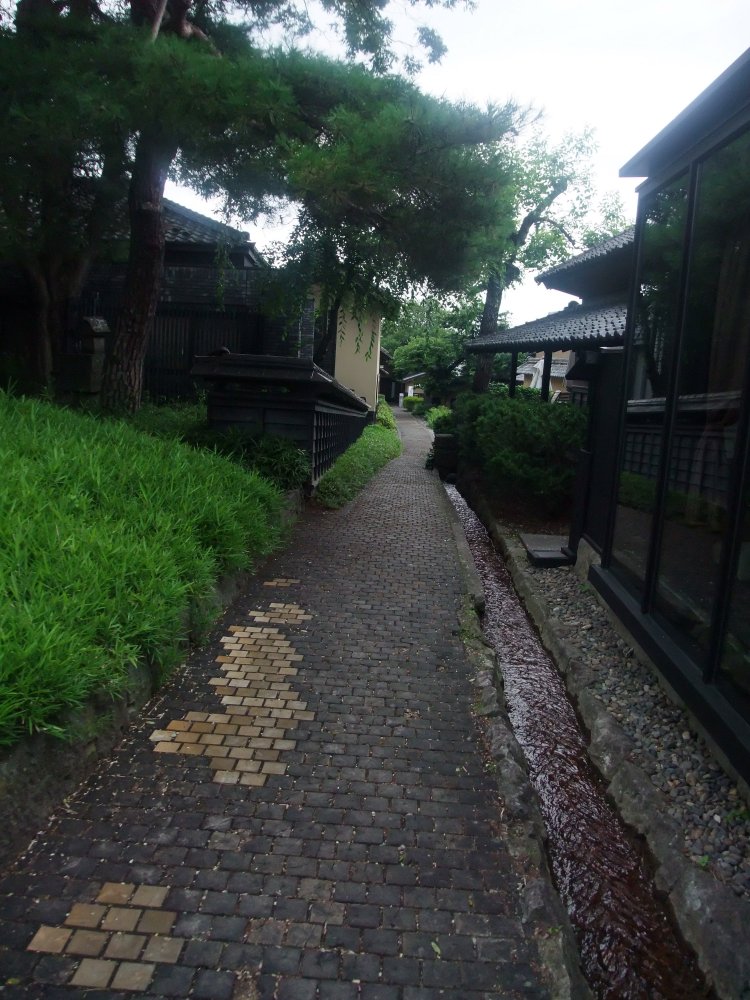
The famous KURI-NO KOMITI (chestnut path)in Obuse. The paving is made of
wood from chestnut trees.
We paid a visit to Northern Nagano. Nagano is land-locked, mountainous and is the fourth largest of the 47 prefectures, after Hokkaido, Iwate and Fukushima. It has beautiful mountain ranges, notably the North Alps, Central Alps and South Alps forming the borders of the prefecture. In the mountains, there are some popular resort areas such as Kami-kouchi, Karuizawa and Tateshina. After Japan ended self isolation, many foreign engineers, scholars and missionaries visited Japan. Canadian Alexander Croft Shaw, an Anglican Church priest found the beauty of Karuizawa and built his villa there, and another British Anglican Church priest, Walter Weston introduced Kami-kouchi to the western world. In the pre-Edo period, Nagano (then called Shinano) was the site of many clashes between powerful feudal lords vying to take possession of the area for its strategic importance. There are many castle ruins and battlefields to visit.
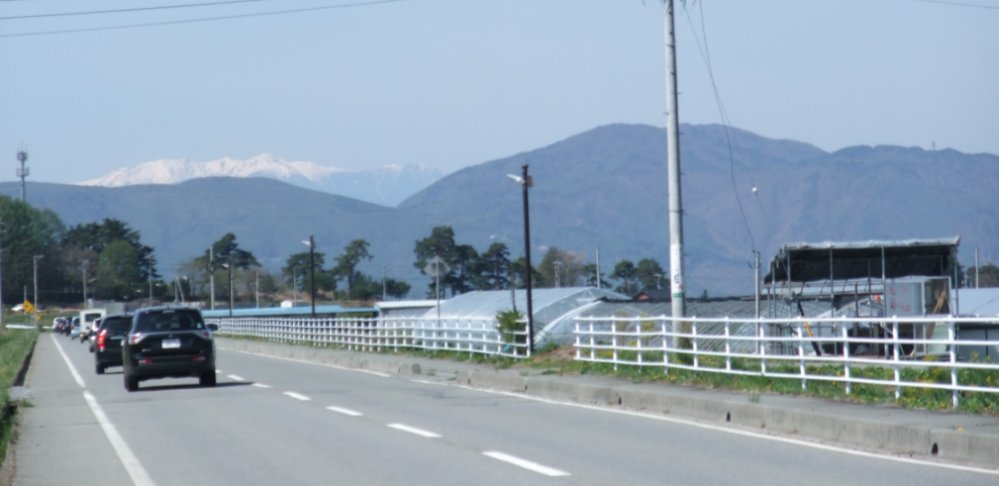
View of Northern Alps from Tateshina
On this occasion our main interest was to visit Matsushiro (now part of
Nagano city), a Jouka-machi (castle town) of the Sanada Family during the
Edo era, and Obuse, known as the little Kyoto of Shinano famous for its
historical Edo buildings. It is important to know of the Sanada Family,
who are popular not only in Nagano but the entire country. We have a saying
called Hougan-biiki, which means favoring a good person but did not achieve
his final goal. Yukimura Sanada is particularly favored in Japan, as a
strong and loyal samurai. Yukimura fought for the Toyotomi Family courageously
against the Tokugawa Family until the Toyotomi Family were finally defeated
in the early 17th century, the start of the Edo era. Yukimura was the younger
brother of Nobuyuki Sanada, who became the first ruler of Matsushiro, the
largest fiefdom in Nagano in the Edo era. Normally the Sanada Family would
not have survived under the Tokugawa shogun, as they had fought against
Tokugawa, but because the elder son Nobuyuki had separated from the family
and took to the Tokugawa side, the family retained its position. Nobushige
was the real name of the younger brother, but people say that they used
a fictitious name Yukimura, as it would be blasphemous to the Tokugawa
shogun to depict a person that had fought against Tokugawa as a hero. In
the article on Tomioka (Gunma), I wrote about a popular annual TV drama
series, Taiga Drama by NHK that is aired every Sunday for 40 minutes from
8pm. The 2016 series is about the Sanada Family, Yukimura in particular.
Northern Nagano is proud to call itself Sanada country.
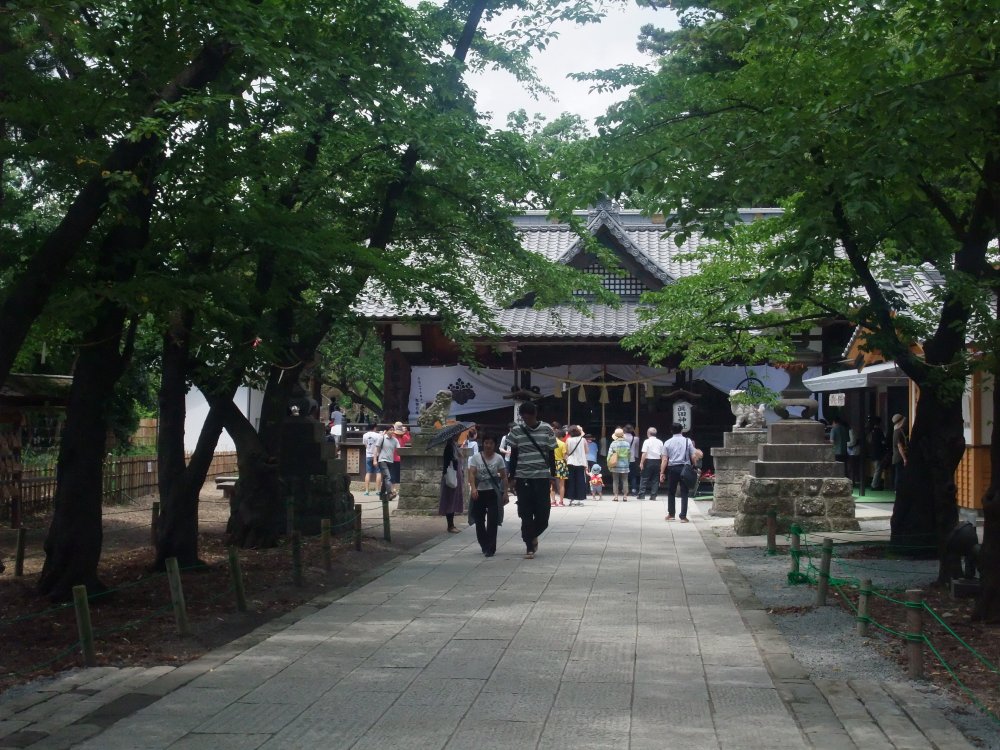
Sanada Shrine dedicated to the Sanada Family is located inside Ueda Castle.
On our way to Matsushiro, we paid a brief visit to Ueda Castle, which is located about 25 kilometers south of Nagano city. Ueda Castle was the main castle for the Sanada Family until demolished by order of the Tokugawa for taking Toyotomifs side. The Sanada Family was later ordered to move to Matsushiro Castle. The ruins are of a castle rebuilt in the 1630s by the Sengoku Family.
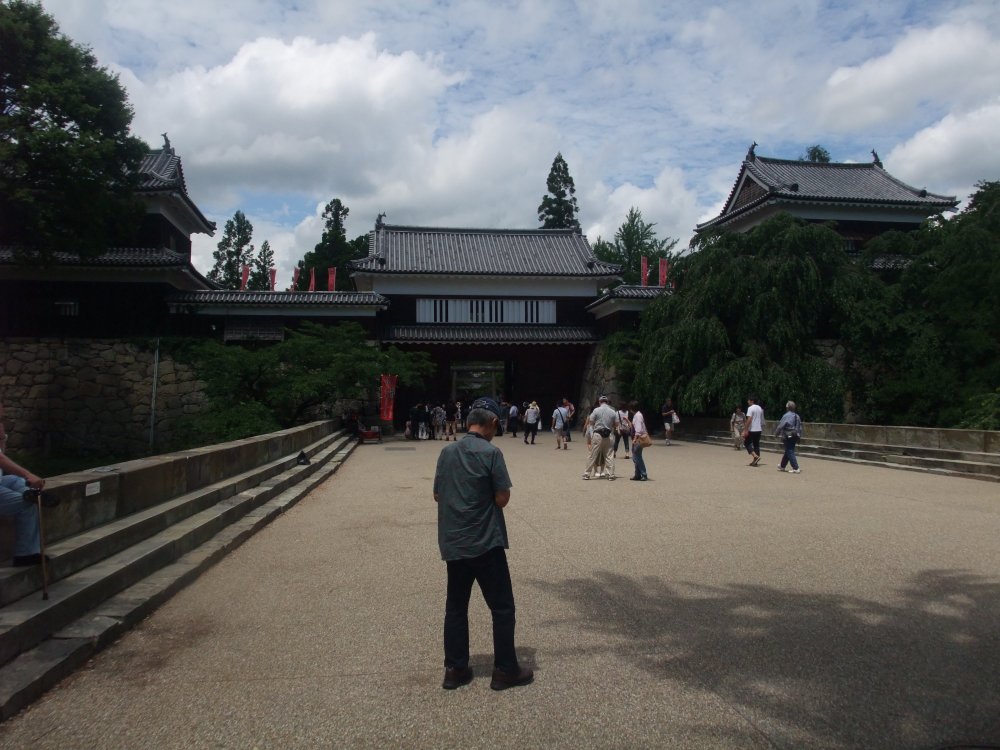
Entrance bridge leading to Ueda Castle.
It is about a 30 kilometers drive to Matsushiro. As it was noon time, we decided to have lunch before exploring Matsushiro. In the article on Izumo, I wrote about soba (buckwheat noodle) and that northern Nagano was one of the areas famous for its soba. We came across some soba noodle restaurants closer to the castle. There was one in an historic samurai house from the Edo era. It certainly seemed very popular as the restaurant was packed with guests most of them waiting to be served. When having soba, it is preferable to have Teuchi (hand-made) soba than machine made. Soba is made by kneading soba flour and then thinly slicing the dough. Only a limited amount is produced at a time on site, so they may run out of soba for the day or it may require some waiting time for them to produce more. We were getting hungry, so we gave up that restaurant and went on walking till we came across another soba restaurant in a more remote area.
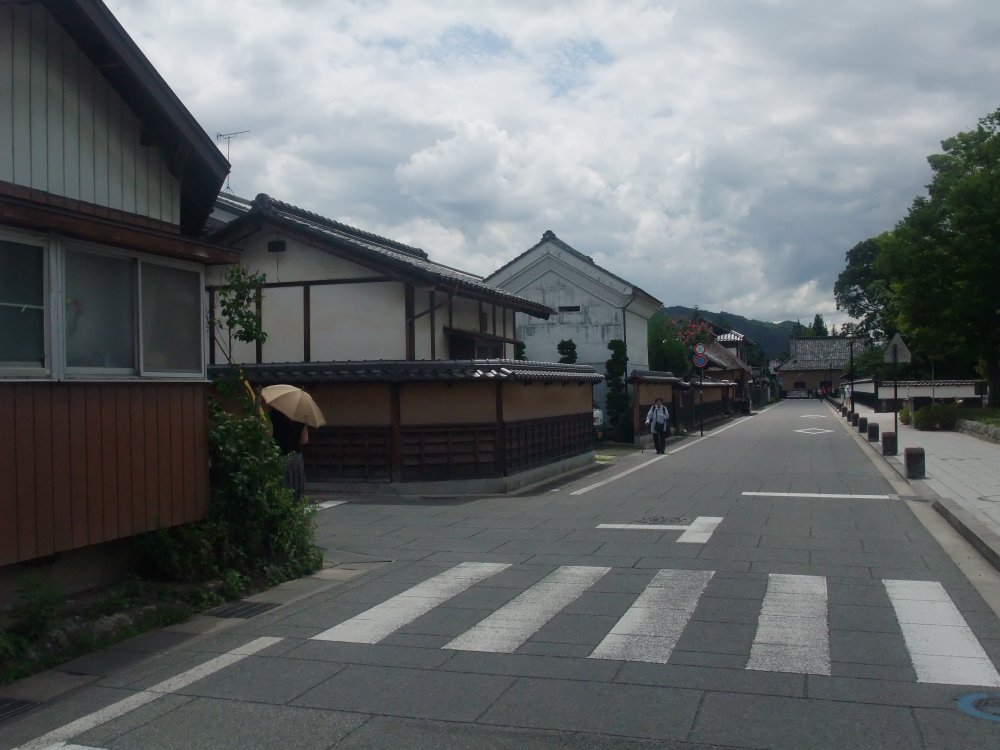
We walked further away from the high streets in search of a soba restaurant.
The restaurant seemed alright as they had a proper hand making area (teuchi soba noodle restaurants often have hand making areas that guests can see them making the soba), but the restaurant itself was quiet which made us wonder whether they were open at all. We entered the restaurant to find one group guest, but the owner was nowhere in sight. We had to wait a while till he came out to serve the guests. He finally came over to tell us that we may have to wait for him a while to make more soba. We told him that we were willing to wait. We soon found out why there were so few customers. A couple came in after us. The owner said they may have to wait long as they had to be served after us. When the couple asked for how long, he replied quite a while, and the couple left. Then another group came in, received the same response, but they decided to wait. And so it went, one group to the next. We also noticed that the owner was taking orders, making the soba, boiling it and frying the tempura. There were no waiters or any other staff. We ordered soba with tempura, expecting to have a long wait being served. It didnft take that long, but the quality of the soba and tempura was excellent. We had noted that the restaurant was not receiving high ratings, but that must have been because of what I experienced as above. My wife and I agreed that the restaurant deserved a higher rating. It was just that the owner was too honest about waiting times.
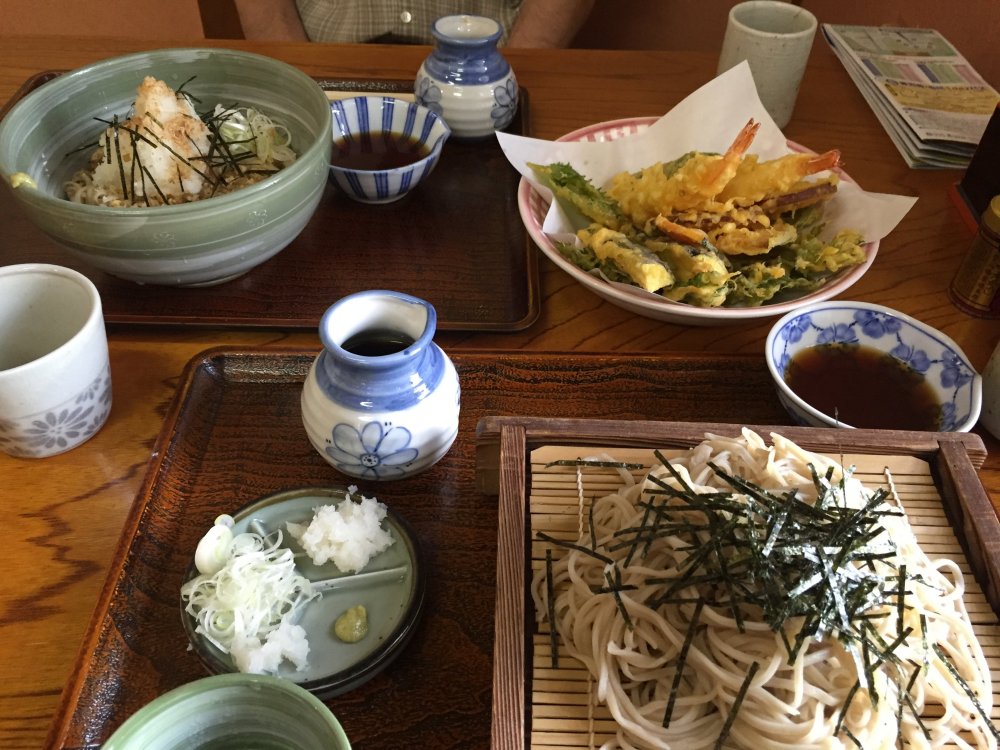
We had teuchi-soba with tempura
We first visited the former Yokota Family residence. This is a typical residence for an upper class samurai. It is worth a visit, the main house building as well as the Japanese garden in the back. We found a local brewery with a shop. After conversing with the shopkeeper, I learned that the brewery is no longer making sake. They were acquired by a larger sake brewery in Nagano that now produces the local brands on their behalf. That was not what we are looking for, so we left the shop without making any purchase.
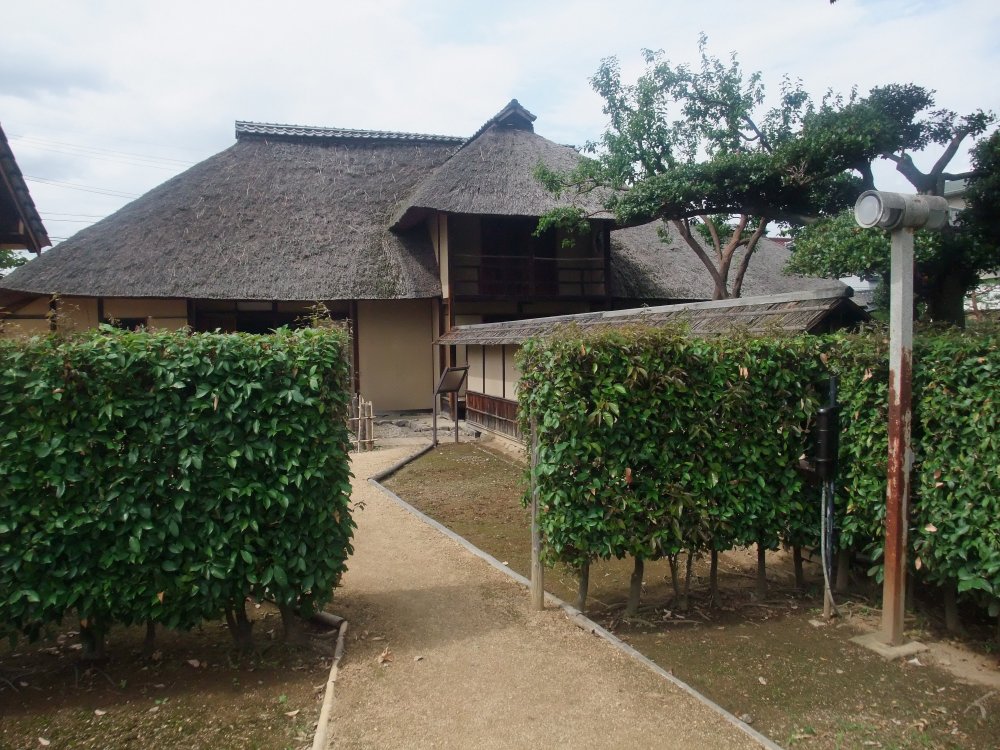
View of the former Yokota Family residence from the back garden
The streets of Matsushiro have well preserved their historic buildings
from the Edo era. We visited the former Higuchi Family samurai residence
and then the Matsushiro fiefdom Bunbugakkou (samurai school to deepen understanding
of samurai beliefs and for developing their swordsmanship). The former
Higuchi Family residence was quite similar to the Yokota Familyfs. It appears
the An NPO now manages the building and holds exhibitions from time to
time. They were exhibiting Matsushiro-tsumugi. Tsumugi refers to silk products
woven with spun silk. This area is on the other side of mountains from
Tomioka in Gunma prefecture, and here also silkworm breeding was a popular
industry. It was also interesting to note that Matsushiro Elementary School
is located on the same land plot. People in Nagano prefecture are seen
as placing the greatest emphasis on education.
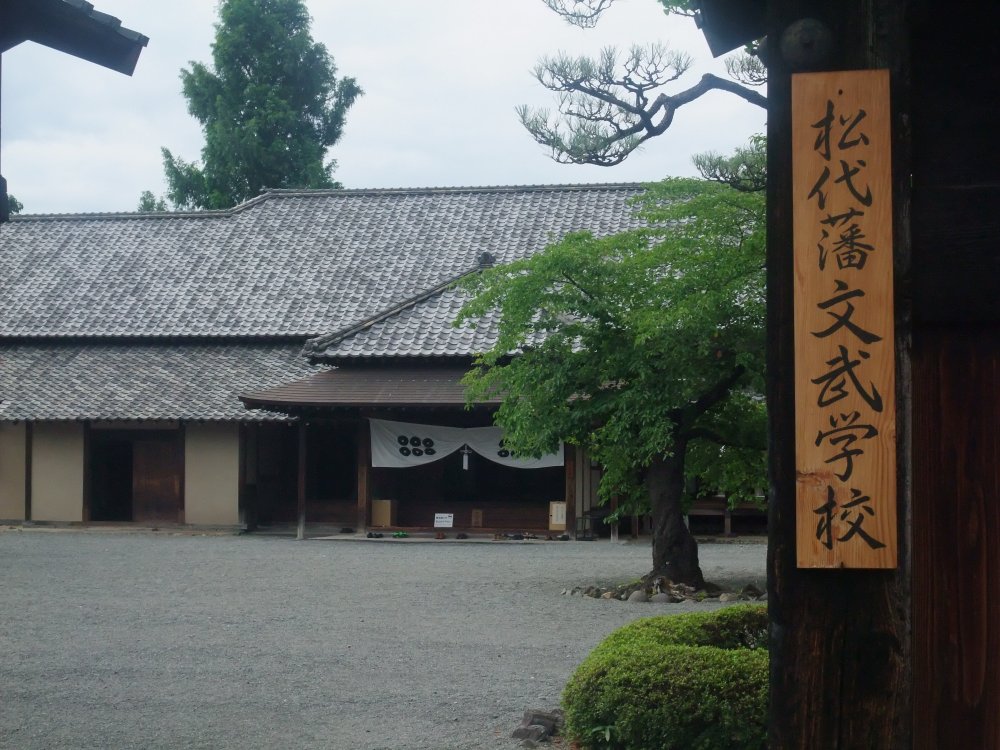
Entrance to the Matsushiro fiefdom Bunbugakkou
The Sanada Familyfs coat of arms was Rokumonsen, literally six penny coins. There were many Rokumonsen flags at the museums around Matsushiro Castle, same as was in Ueda. Matsushiro Castle was originally called Kaizu Castle. It was constructed by Shingen Takeda in the latter half of the 16th century. Until Hideyoshi Toyotomi came to rule entire Japan in 1590, there were many powerful feudal lords vying to become the champion to rule the whole of Japan. Takeda based in Yamanashi, and Uesugi based in Niigata were two particularly strong feudal lords, and the north Nagano and Gunma area which was in between their bases was always subjects of battle between the two. Kaizu was built as a Takeda fort against the Uesugi. Using River Chikuma as a natural moat, this was a very difficult castle to attack. River Chikuma, by the way is the name given to River Shinano, the longest river in Japan while it flows through Nagano prefecture. The river originates in the Northern Alps, flows through Nagano and Niigata into the Sea of Japan. In the article on Tomioka, I wrote that there are some towns around Japan that are called Little Kyoto (shou-Kyoto) and that in order to qualify as a Little Kyoto, a town must have scenery similar to Kyoto (typically, a river, historical buildings, many temples and shrines), classic art and industry and some relationship with Kyoto. Some people regard Matsushiro as a Little Kyoto. It has beautifully preserved historic buildings, River Chikuma and classic industry such as Matsushiro-tsumugi.
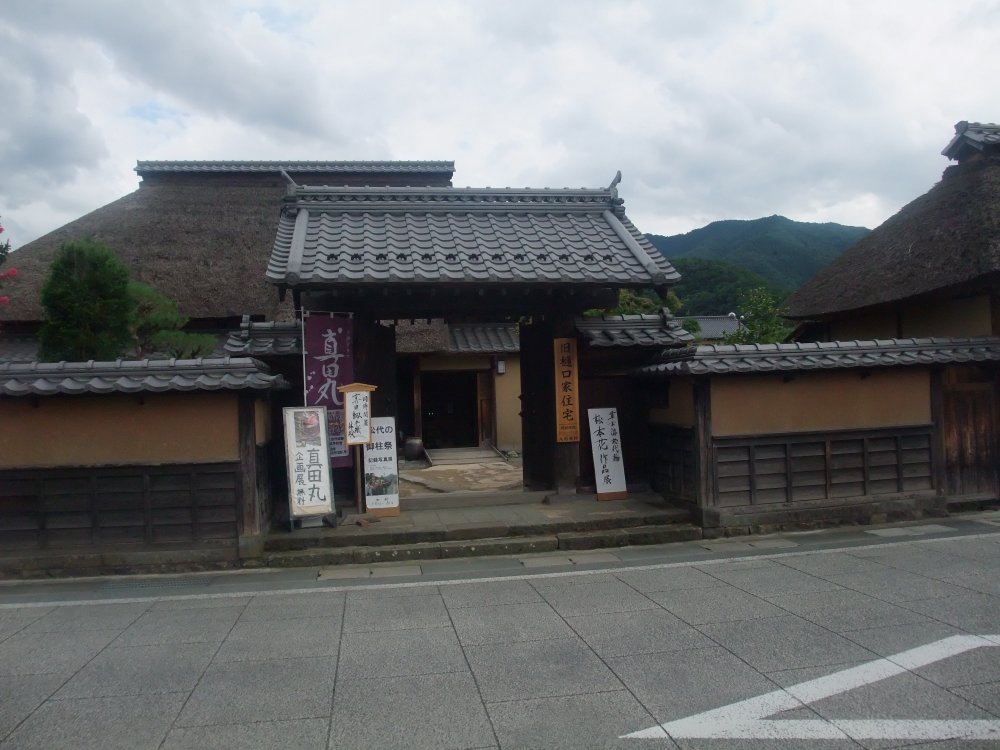
They were exhibiting Matsushiro-tsumugi at the former Higuchi Family residence.
Our final destination was Obuse, about 25 kilometers nor th east and 10 kilometers east of Nagano city. We wished to visit Obuse as this was another area called Little Kyoto It is also famous for its sweet chestnuts and its relation with Hokusai. Hokusai lived 4 years in Obuse. Hokusai left a particularly striking roof art in a Soutou Zen sect temple Ganshouin. It was very warm that day. We parked our car in a car park off the high street. We went up the famous KURI NO KOMITI (chestnut path) for a couple of minutes that led us up to a plaza surrounded by famous chestnut sweet shops. It was a warm day, and my wife enjoyed a KAKIGOORI with chestnut flavor. KAKIGOORI is thinly chopped ice in a bowl with a topping of syrup, typically melon, lemon or strawberry. In most cases, the syrup is artificial color and flavor. Here the chestnut flavor was genuine. We bought some delightful chestnut WAGASHI at the shop.
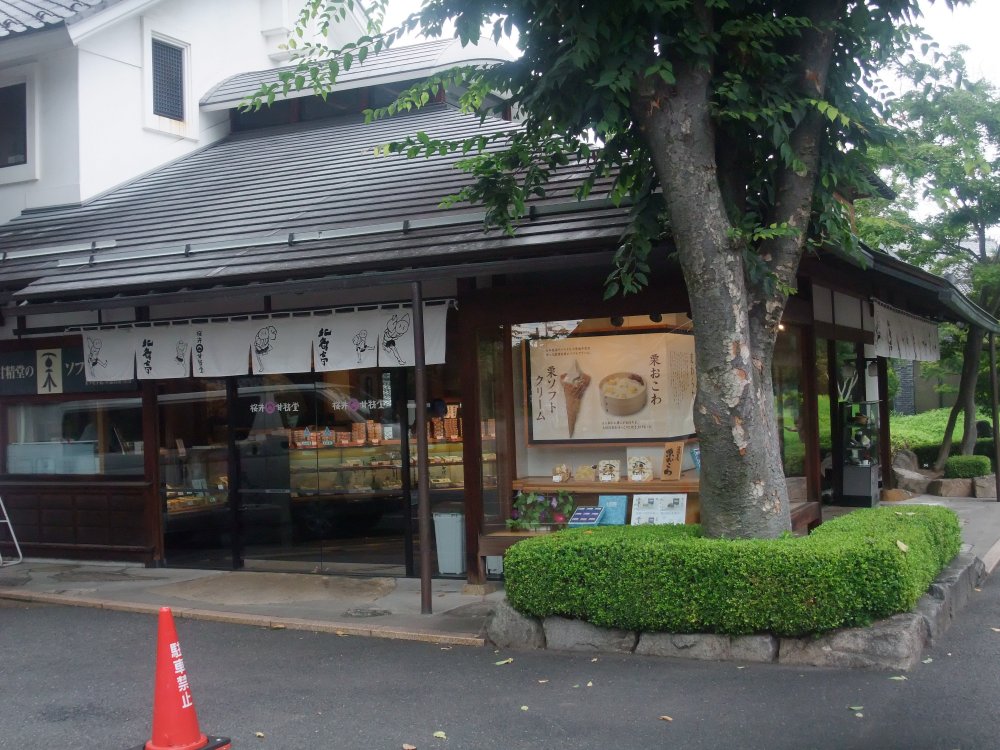
My wife enjoyed a KAKIGOORI with chestnut flavor.
Obviously we couldnft leave without visiting the local brewery. The route
to the local sake brewery was well posted. I had a delightful conversation
with the shop owners. You can easily understand how sincere and proud the
brewers are of their brand. This brewery had a brand called Yoshinogawa.
Now there are a couple of sake brands with the Yoshinogawa name. The owners
told us that they had added a small gauthentich to their brand Yoshinogawa.
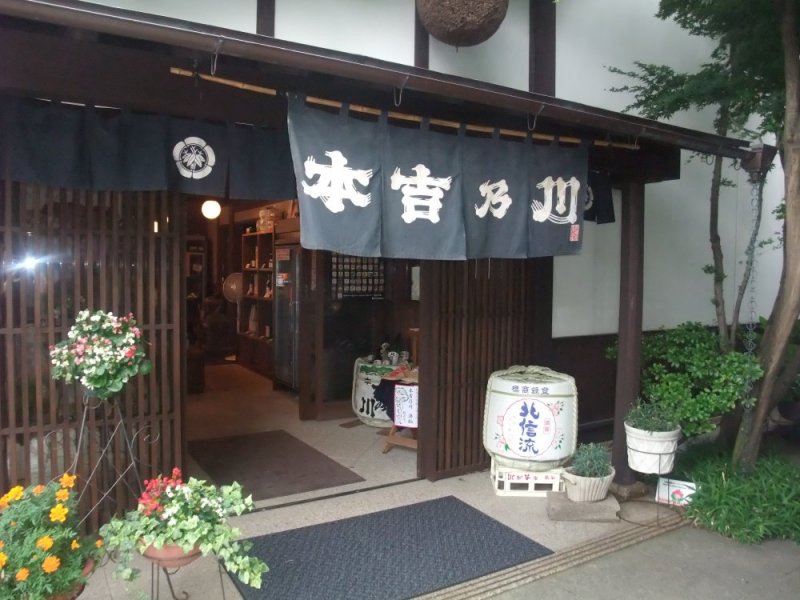
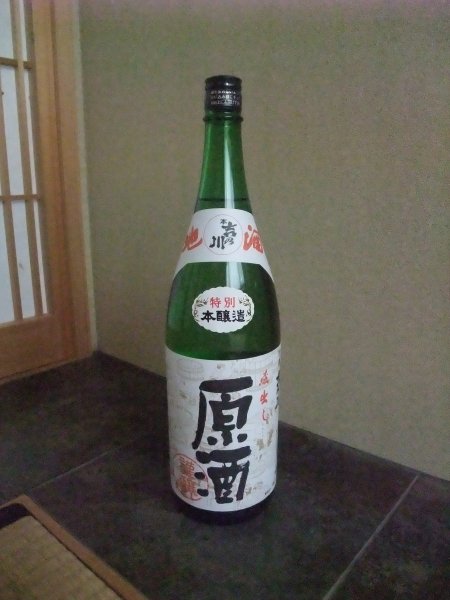
I had a delightful conversation with the shop owners of Hon-Yoshinogawa. Brewery (left) and a 1.8 liter bottle of Hon-Yoshinogawa honjouzou genshu (right)